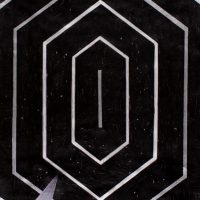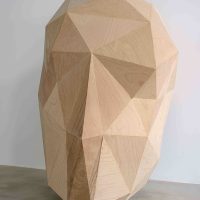Mark Fridvalszki (1981), Berlin-based Hungarian artist, provides with pseudo-scientific readings on the relation between the universe and man via his minimalistic compositions constructed of geometric ground-forms. His graphic formulations resonate the sequences of techno music through the applied repetitive imagery and black-and-white tone. The xerox works made by analogue technology reanimate the orthodox genre of collague as used by the constructivists and surrealists. Browsing through his portfolio, the big inquiries of human existence remarkably mark his main issues that address the questions of ‘Where are we coming from? Who we are? And where are we going to?’. The forms he applies bear allusions simultaneously to the ancient times, the technocratic present and apocalyptic future, where the cold, eeire atmosphere predominates the symbolic order.
Marko Tadić (1979) from Zagreb, approaches from the DIY aesthetics that appears as a result of filtering collective memory through subjective history intertwined with surrealistic responses. His work complex entitled We used to call it…Moon consists of found and manipulated postcard collagues, drawings, light boxes and animations. The collagues resembling diary entries or personal notes are centered around the co-habitance with the Earth’s constant accompanist, the here fictitiosly doubled Moon. The WHW curator team described the work, as if “the artist would have created an archive of the sentimental motifs of fictive touristic destinations and kitchy illustrations, in which the image of the second Moon is inserted in a discrete, but obsessed manner”.
Pavla Sceranková (1980) is a Slovakian artist based in Prague. The jumping-off-point to her work entitled Puzzle is rather based in a human-scaled, accessible past, than a distant one. Her methodology refers back to the distorting capacity of visual memory and dreams, together with the inclusion of a period’s specific objects that she includes and re-interprets. Her attitude is rather observational and analytic, than explicitly nostalgic. The aspiration to extract personal narratives out of the fragmented memory goes together with the exagerration of measures caused by this memory trick: forms get bigger, shift, collapse. Puzzle is a three-dimensional recontruction of the well-known toy. The scattered positive elements share the same forms of the undercut negatives on the base, where one must find the only one perspective and distance, through which this coincidence can be right observed. The other sculpture of hers, presenting a skull-like human head, reveals its splintered metal-coloured structures from the back, thus showing up its other character altered according to the observer’s determination.

